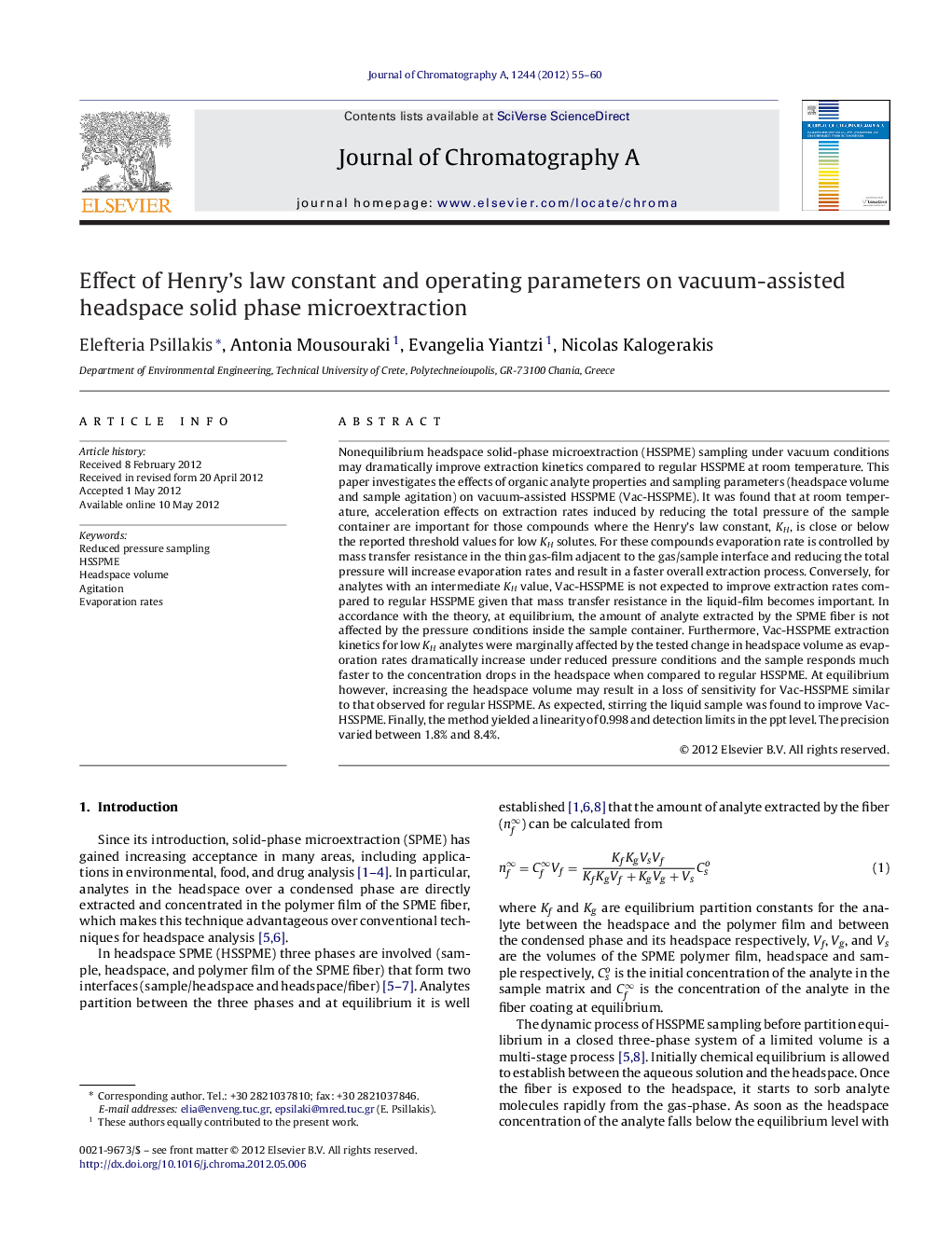| Article ID | Journal | Published Year | Pages | File Type |
|---|---|---|---|---|
| 1200680 | Journal of Chromatography A | 2012 | 6 Pages |
Nonequilibrium headspace solid-phase microextraction (HSSPME) sampling under vacuum conditions may dramatically improve extraction kinetics compared to regular HSSPME at room temperature. This paper investigates the effects of organic analyte properties and sampling parameters (headspace volume and sample agitation) on vacuum-assisted HSSPME (Vac-HSSPME). It was found that at room temperature, acceleration effects on extraction rates induced by reducing the total pressure of the sample container are important for those compounds where the Henry's law constant, KH, is close or below the reported threshold values for low KH solutes. For these compounds evaporation rate is controlled by mass transfer resistance in the thin gas-film adjacent to the gas/sample interface and reducing the total pressure will increase evaporation rates and result in a faster overall extraction process. Conversely, for analytes with an intermediate KH value, Vac-HSSPME is not expected to improve extraction rates compared to regular HSSPME given that mass transfer resistance in the liquid-film becomes important. In accordance with the theory, at equilibrium, the amount of analyte extracted by the SPME fiber is not affected by the pressure conditions inside the sample container. Furthermore, Vac-HSSPME extraction kinetics for low KH analytes were marginally affected by the tested change in headspace volume as evaporation rates dramatically increase under reduced pressure conditions and the sample responds much faster to the concentration drops in the headspace when compared to regular HSSPME. At equilibrium however, increasing the headspace volume may result in a loss of sensitivity for Vac-HSSPME similar to that observed for regular HSSPME. As expected, stirring the liquid sample was found to improve Vac-HSSPME. Finally, the method yielded a linearity of 0.998 and detection limits in the ppt level. The precision varied between 1.8% and 8.4%.
► High extraction rates for low KH analytes with HSSPME under vacuum conditions. ► HSSPME of intermediate KH analytes is not affected by the total pressure. ► At equilibrium HSSPME is independent of the total pressure. ► Headspace volume does not affect extraction rates of low KH analytes under vacuum. ► Sample agitation improves HSSPME sampling under vacuum conditions.
